Believe you me, I totally understand how traumatic it can be when a furry family member goes missing!
Thanks to running a cat sitting business—and being owned by a kitty myself—’how to find a missing cat’ is something I have researched hard! You’ll find this post is brimming with useful ideas and resources. If you’re short on time, I’ve also put together a quick ‘In a nutshell’ list which you’ll find at the bottom of this post.
Before we start, just remember you are not alone! There are a multitude of people like me who will want to help reunite you. You just need to know where and how to find them…
Right! Let’s get this kitty back home!
Is there any chance my cat is still hiding at home?
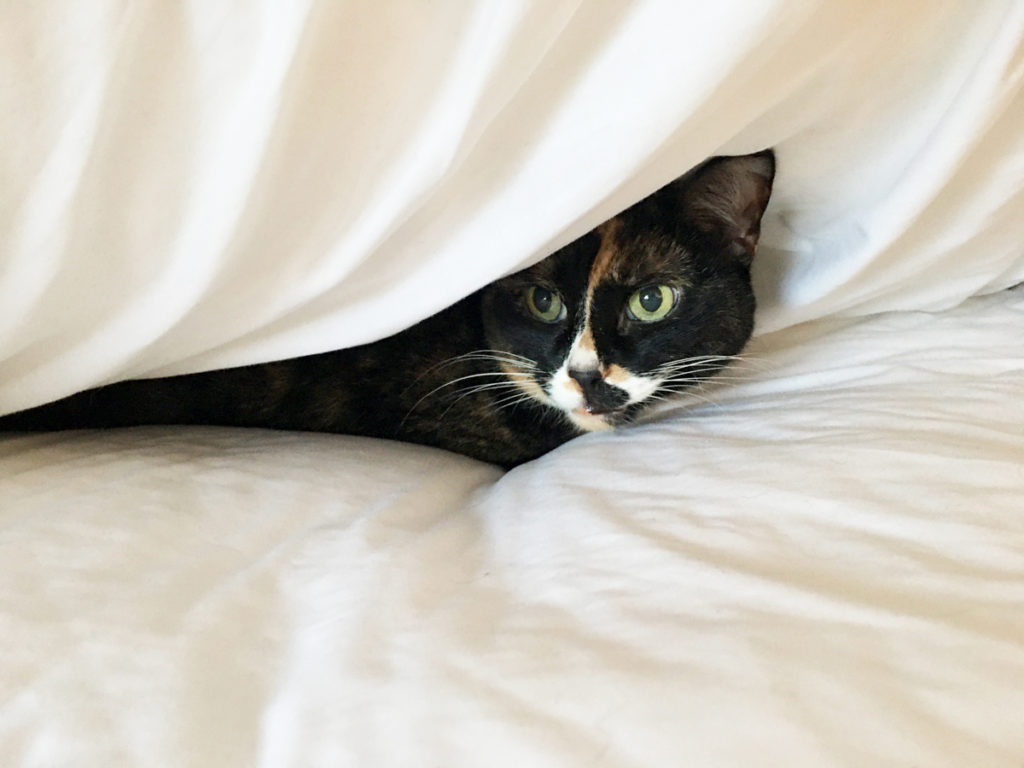
Do remember that cats often hide or get stuck in unusual spots!
With this in mind, check these areas, being as methodical and thorough as you can:
- wardrobes and cupboards
- behind kickboards
- under beds and bedding
- in or behind drawers
- laundry baskets
- in outdoor bins including compost
- water butts
- any outside storage
- planters, hedges and trees
- inside the fireplace
(a cat of mine clambered up onto a ledge & didn’t have the decency to let me know) - cellars, basements and lofts
- any outbuildings such as sheds and garages
- roofs
- cars
Useful searching tips:
- Use familiar sounds that your cat responds to, such as:
- the shake of a treat packet
- tapping of a food bowl
- the sound of your voice calling
- whistling
- Leave moments between calling/shaking treats to listen out for meowing or scratching noises
- They may be scared, so sound calm to help keep pusscat at ease
- Once you’re absolutely certain that a room is clear, secure it properly.
You’ll want to eliminate any chance of the cat re-entering without your knowledge!
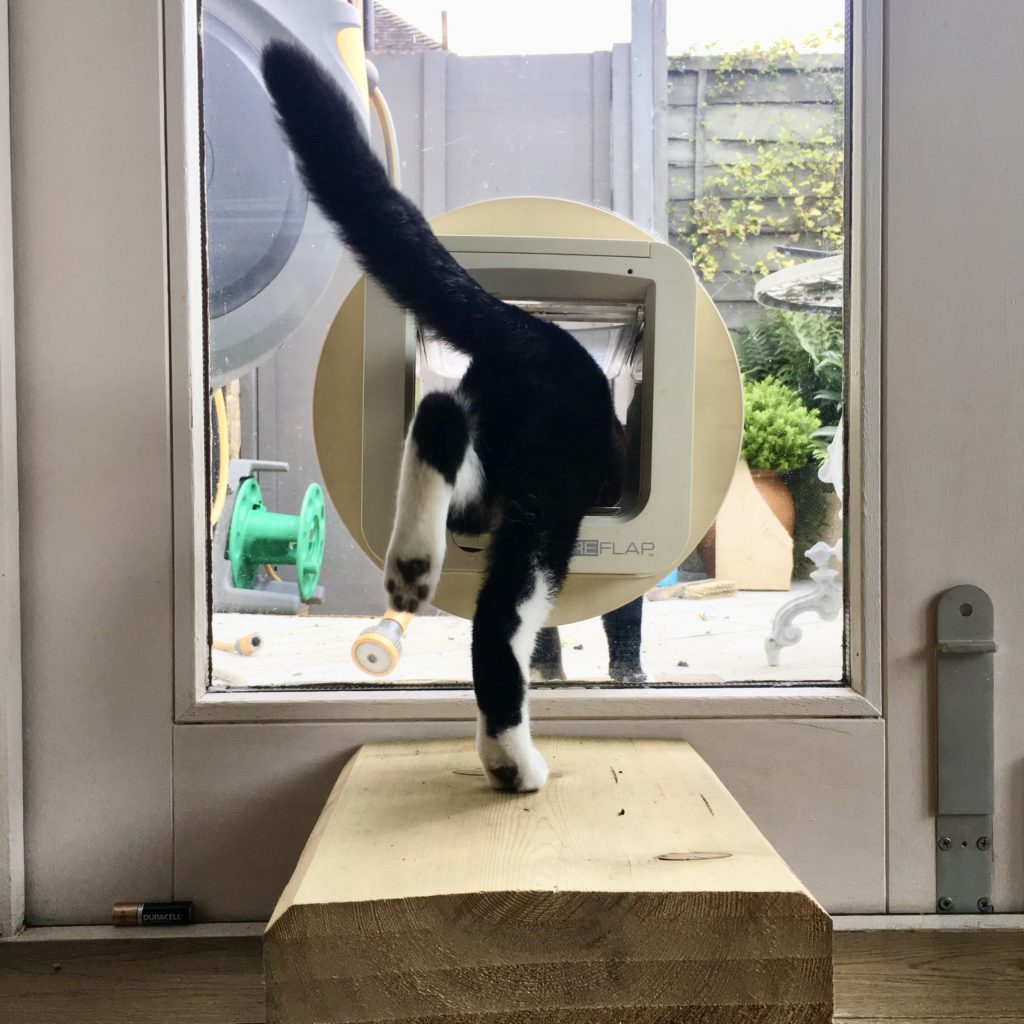
Once 100% certain that the cat is not hiding in a nook at home, I suggest following these steps:
- If you have a cat flap, set it to incoming only.
- Make sure internal doors are closed.
This will ensure that if they sneak in, they can’t wander off into other rooms and hide. - Can you see into your neighbour’s garden?
Without being intrusive, have a look to see if your furball has found a cosy spot to snooze in.
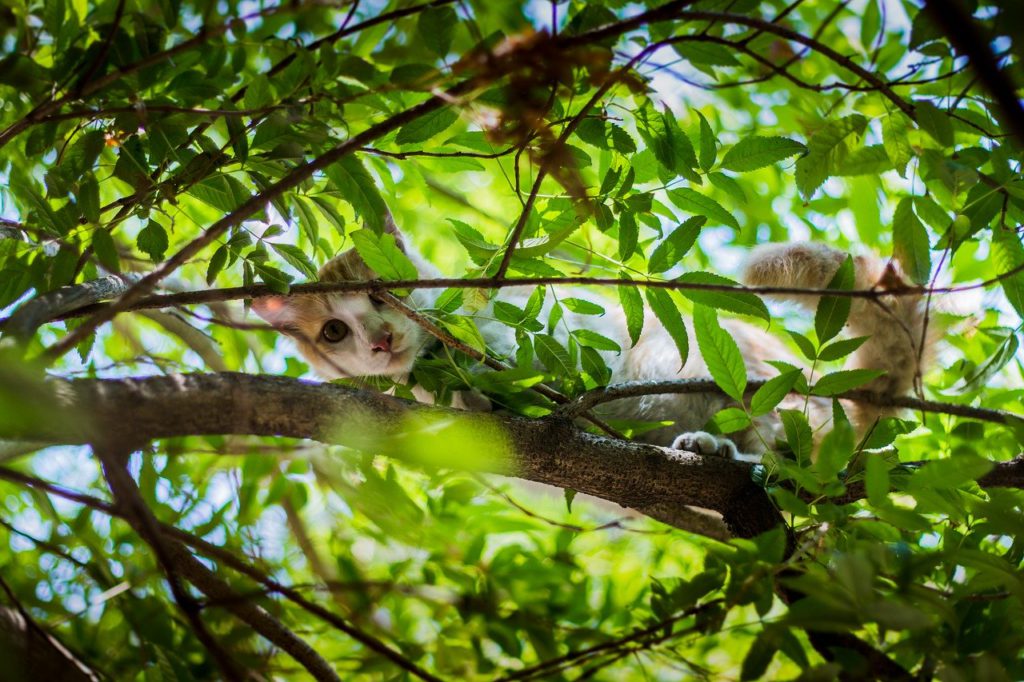
What documentation will be useful for finding my cat?
Gather together useful information about:
- your vet’s contact
You should let your vet know that your cat is missing. They will let you know if your cat is brought in. - microchip
If you don’t recall who your cat is microchipped with, Check a Chip identifies which database holds the registration for the microchip number. - pet insurance
Some pet insurance will cover the cost of printing, a reward amount & advertising in the local paper for a missing pet.If you have insurance, you may like to check whether yours covers any of these.
If your cat is chipped…
… make sure your contact details are registered and up-to-date with the microchip database. Many people are unaware that vets don’t automatically register owner details with microchip databases—you need to do this yourself.
How do I make a missing cat poster?
Ideally, you’ll be wanting to find a couple of photos that clearly show your cat and any distinguishing marks.
Please bear in mind that some people just can’t see subtle differences between cats.
False sightings not only affect you emotionally, but they waste valuable time.
Both Canva and Adobe Express have free membership options with editable lost cat poster templates.
If you are able to edit pdfs, here’s a simple Adobe Acrobat template poster to download.
Just add the photos and amend the appropriate information.
Now it’s time to fire up the printer.
If you don’t have access to one, consider asking friends, local libraries and shops, the vet or pet stores. Or print off copies at work.
Try to get your missing cat poster printed in colour, if you can.
Where should I display my missing cat posters?
Something worth considering is how far cats roam. According to the data collected from Secret Life of the Cat our feline friends don’t stray too far from the house:
‘A cautious cat may only ever venture 10 metres from their cat flap, but we found the average roaming distance is just 40-200 metres from home. Farm cats were the real adventurers, travelling up to a kilometre away to hunt, with males sometimes roaming three times further.’
Dr. Bradshaw, Secret Life of the Cat
With this is mind, and perhaps the help of a map, have a think about where you will need to concentrate your search.
If you have moved recently, you should expand your search to include your previous location if it is within a close distance. Ask your old neighbours to keep an eye out and secure your cat for you, if your cat is found and is easy to handle.
Posters on lampposts at eye-level, in the local area, are a starting point.

How do I ask my neighbourhood for help finding my missing cat?
Cats love to trespass!
Speak to your neighbours
So, first things first, speak to your neighbours on either side, front/back.
Don’t forget to give them your number so they can contact you immediately if they spot the wanderer.
Of course, some neighbours can’t resist feeding visiting kitties… and our kitties can be a sucker for a second home. So do prepare yourself, as this behaviour has a reputation for causing unwanted friction between neighbours.
Pop flyers through doors
If you can enlist a helper or two, do.
Ask local establishments to display your missing pet poster
Try shops, vets, pet stores, post offices, doctors’ surgeries, schools, pubs and cafés.

Social media can help enormously.
Facebook
Assuming you have a facebook account, write a public post on your wall.
Ideally, your post will include your missing cat poster. As you will be wanting as much reach as possible, tag your local vets, pet shops, animal shelters and charities in your post. Also tag Pet Alert and Animal Search UK.
This may well encourage them to share your post.
Now, search for relevant and active, local facebook groups and send a request to join. Once accepted, add your post. Again, don’t spend too long on it, but ensure too include all information and upload a few extra photos, if you have.
nb. If a facebook group is ‘private’, members will not be able to share your posts outside of the group, so give them a link to your public post on your wall.
Nextdoor
If you don’t know it already, Nextdoor, in their words is “the neighbourhood hub for trusted connections and the exchange of helpful information, goods, and services.”
Being the cat-lover that I am, I always pay close attention to missing cat posts & have witnessed so much support from the local Nextdoor network. I suggest joining.
Who should I log my missing pet with?
I recommend logging your missing cat with online sites such as:
petlog.org.uk, animalsearchuk.co.uk and petsreunited.com
Not only are sites such as these handy for reporting a missing pet, but they are also useful for keeping an eye out for found pets.
Consider getting in contact with local:
- vets
- animal rehoming charities
- council’s street cleaning team
- police
- paper (lost and found department)

How do I help my cat find its own way home?
Astonishing as it may seem, sometimes our feline family find themselves off the beaten track and in need of a little help working out where home is.
The majority of cats have a supreme sense of smell, so I suggest leaving the following outside, sheltered from rain:
- some of their used litter (some warn that this can encourage foxes)
- bedding that smells of them, you or both
- something that smells of you – a worn item of clothing perhaps
- contents of the vacuum cleaner
- a favourite toy
Calmly call them and shake their treats, making sure to take time to listen. Searching at nighttime when the world is sleeping, can be beneficial.
My cat has come home, what should I do?
First and foremost, lock the catflap and gently check for any signs of injury. If your cat seems unhappy to you, perhaps they are feeling unwell or have been hurt. Call your veterinary surgery if you see any signs of trauma or illness.
If all is well, then make them feel at home with fresh food and water, clean litter and as many or few cuddles as they like… and don’t forget to be kind to yourself too!
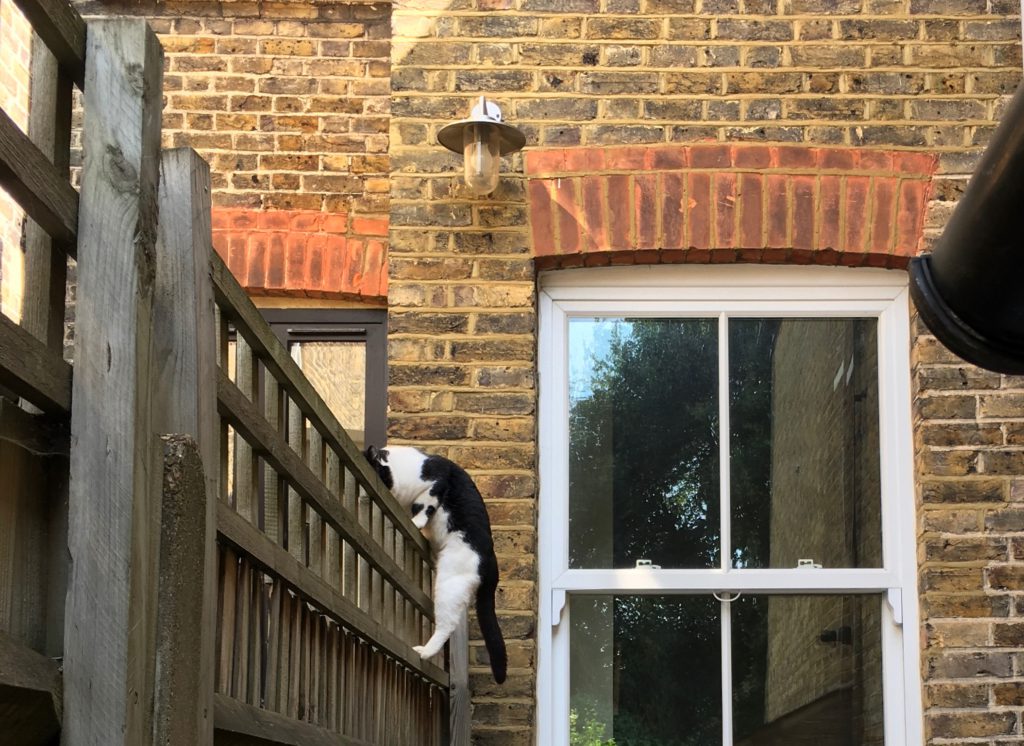
How can I prevent my cat from going missing again?
Microchip
First and foremost, get your moggy microchipped. Chipped cats have a much higher chance of being found. If yours is chipped, consider asking the vet to check it at your next appointment. On occasion, chips have been known to move.
In England, it is now required by law for cats to be microchipped by the time they are 20 weeks old, so it’s not just important—it’s mandatory! A microchip offers your cat the best chance of being identified and returned to you if they go missing again.
Tracking Device
Although remember not to force a cat to wear something that distresses it. Companies like Tractive are becoming more common, so if you’re unsure which to choose, Trustpilot can help.
Collars are a bit of a Marmite topic.
One benefit is that they can display contact details.
Collars are also useful for sharing health issues, such as indicating if your cat needs a special diet. This can help prevent well-meaning neighbours from feeding your cat foods that could harm their health.
It’s critical to use fast-release collars to reduce the risk of strangulation. At night, reflective collars can help make cats more visible to drivers. Keep in mind that some cats may find the sound of a bell on their collar distressing.
Train your cat to the sound of a bell
Clients of mine in London had the ingenious idea of ringing a small bell every meal time.
Over time, the kittens associated the bell-ringing with meals/treats and now, they run home whenever they hear it.
You could also try whistling instead of ringing a bell – this works with my cat, although less so now, being hard of hearing. Amusingly though, various other cats I look after come zooming over the fence in response (and Squirrelly the squirrel, who thinks it’s nut time). If only I’d thought to use different whistles.
In a nutshell
A condensed version of the above:
- Search at Home Thoroughly
- Wardrobes, under beds, laundry baskets, outside storage, roofs, cars.
- Use familiar sounds (treat bag, food bowl, your voice).
2. Prepare Documents
- Vet’s contact, pet insurance, microchip details.
- Check and update microchip information in the database to ensure contact details are correct.
3. Create & Share a Missing Cat Poster
- Clear photos, contact details.
- Display locally: lampposts, vets, shops.
4. Talk to Neighbours
- Ask them to check sheds, gardens, garages.
- Share your number for sightings.
5. Use Social Media
- Post on Facebook, tag local vets and shelters.
- Use Nextdoor for local alerts.
6. Log with Missing Pet Sites
- Register with Petlog, Animal Search UK, Pets Reunited.
7. Help Them Find Their Way Home
- Leave out familiar scents: litter, bedding, your clothes
8. Stay Calm & Keep Searching
- Cats tend to stay close to home, especially scared ones.
- Search at night/quieter times.

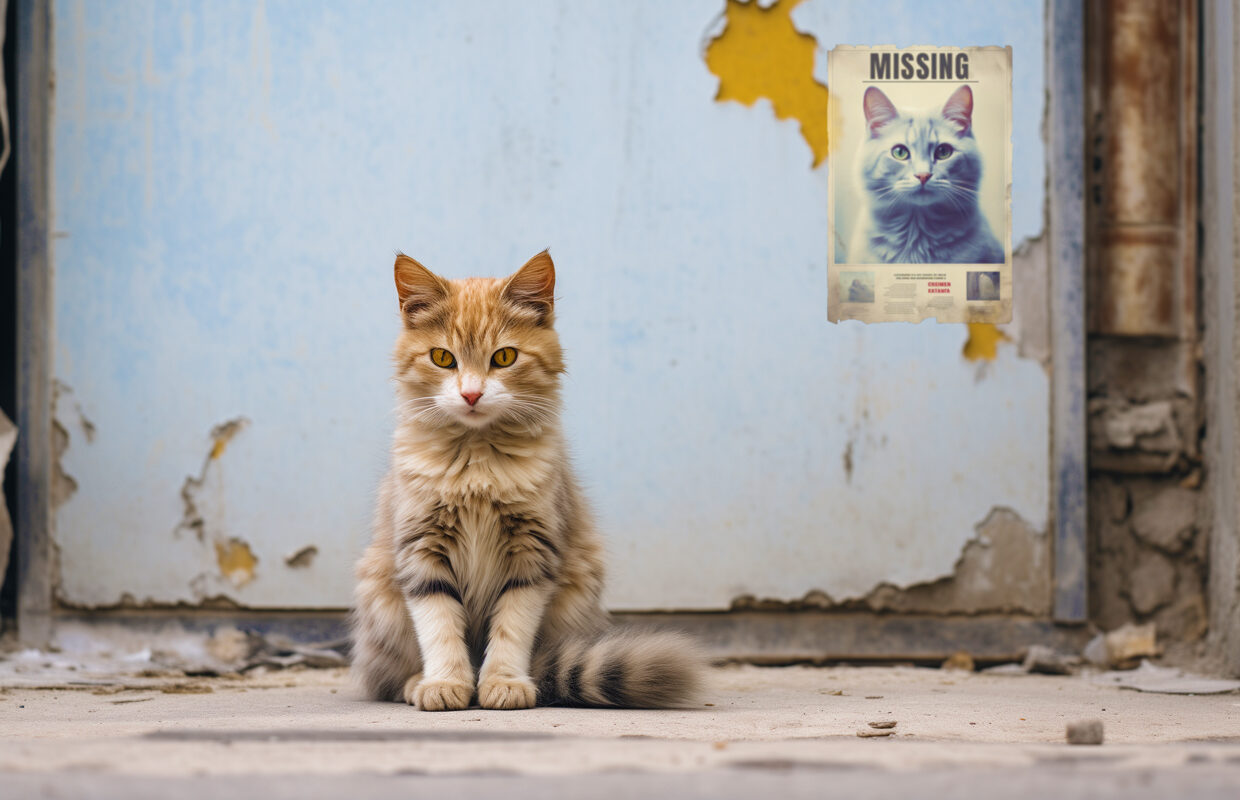

I don’t know how to thank you Tilly, your article saved the life of our kitty Raffy last weekend, after he was found accidentally locked in the boot of our neighbour’s car.
I really hope that people will share this article, because it is such a stressful and heart breaking situation to be in when it does happen, that one feels so completely lost and helpless.
This is invaluable information for anyone who has a kitty at home.